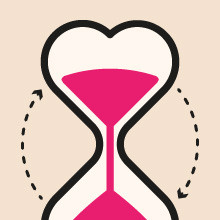Time management tools and tips
Time management can be learned with the tools and tips from experienced time management coaches at TheONE. Different people experience time in different ways. That differs per culture, but also from person to person. Do you want more insight into how you deal with time? Contact a time management coach of your choice via the Live Video Calling.
The best time management tools and tips for professionals and students
If you are a professional or a student, time management is needed to keep efficient and effective. With the tools and tips from time management coaches, you can learn how to manage your time within minutes.
Call a time management coach you select and start learning about time today. You will benefit from it all your life. It's only a small investment in your skills as the coaches are paid per minute. And the best is, the first minute is free.
How different cultures experience time differently
Everyone can have a different experience about time. Some believe they are in a hurry all their lives because time is too short. Others don't worry because they think they always have time enough. In the West, most people see time as linear, while in the East, time is often experienced as circular.
Suppose you have 5 tasks (A, B, C, D, and E) and for a Westerner it makes sense to do Task A first, then Task B, C, D and E. For someone from the east this sometimes does not matter at all and that person can do task C first and then pick up task B to continue with A, E and D. Within business and private life, differences of opinion and perception of time can sometimes lead to unpleasant situations. Indeed, when it comes to how you approach a project and how you should work together.
The essence of time management
Time is a measure of how long something takes. Almost all cultures have 24 hours a day and measure days, weeks, months, and years in time. Time also determines, to a large extent, what we prioritize. A difference in insight and perception about time, therefore, influences our prioritization.
This is where problems occur. How to prioritize? How to know what is more and less critical? Some simple time management tips and tools can help you to define your priorities.
Lack of time management can cause serious issues in life
Time management can lead to, among other things, the following problems due to a difference in prioritization:
- Relationship problems
- Problems with arriving on time or meeting deadlines
- Problems with monitoring overview
The time management matrix tool
To make an overview for yourself, which has the most priority and which has less priority, you can use a time management matrix. The matrix can also help you jointly determine priorities together with a team or your partner. The matrix consists of four fields which have the following name:
- High urgency and very important
- No urgency and very important
- High urgency and not important
- No urgency and not important
The matrix forces you, as it were, to choose what you are going to spend the first time on. The tip is to start with everything that has a high urgency, and the important one.
Email and time management
Many people spend a lot of time reading and answering their mail. Others postpone this and then walk hopelessly behind with an overflowing mailbox. You can prevent this - or at least reduce it - by three simple tips:
- Ask colleagues to put you in the cc as little as possible. It prevents unnecessary emails.
- Handle the mails at one or two fixed times of the day.
- Only reply to emails that urgently require an answer. The emails that have a high urgency and are essential.
Task-oriented thinking and working
Time management coaches at TheONE have many more tips and tools to teach you how to use time more effectively and efficiently. For example, by learning to think and work in a task-oriented way.
This works as follows: You divide your day into different task clusters and tasks. For example, the house cleaning task cluster has the tasks of vacuuming, cleaning up, washing laundry, and so on.
Each task cluster gets a duration, and you start with the tasks that take the most time to do and then the tasks that take the least time after you finished the more time-consuming task clusters.
The theory behind this is that if you have large stones and small pebbles and want to get them in a bucket, you first have to put the big stones in the bucket. If you then throw the pebbles over it, they flow through the massive stones to the bottom. If you do it the other way around, the bucket is too small.
Although the one thrives with this approach, the other gets confused and has no overview anymore. The time management coach will teach you which method suits you best.
-
Robyn KeetBusiness Strategist€ 0,44 pm
-
Liz de WitMindset coaching€ 0,40 pm
-
Rose Marie NelsonLife Coach€ 2,09 pm
-
Vivek SanagariPersonal Development€ 0,16 pm
-
Lucia G OnievaLife Strategy Coach€ 1,29 pm
-
Vace SelviyanNLP-Coach & -Trainer€ 0,89 pm


































